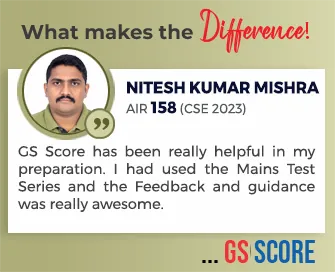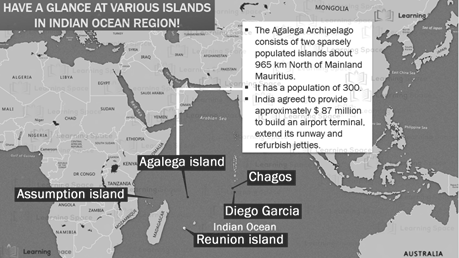

Context
Context
India sent an amphibious warship, INS Airavat, to Madagascar in the Indian Ocean Region to help in rescue efforts after the island nation was hit by a cyclone.
Background
- As part of Operation Vanilla, the Navy delivered clothing, food and medicines, and also provided diving and communication assistance for evacuation.
- This was done after an appeal is made by Madagascar President to deal with unprecedented situation caused by floods.


Look at Indian Navy’s Peacetime Efforts in IOR
- In March 2019, the Navy deployed four warships for relief operations, when Mozambique was hit by Cyclone, Idai. Indian naval teams played a stellar role in search and rescue operations and even set up medical camps.
- A few months later, the Navy sent two warships to Japan to assist in rescue efforts following Typhoon Hagibis.
- A year earlier, Indian vessels had delivered urgent medical assistance to Sulawesi, Indonesia, after it was struck by a high-intensity earthquake. Operation SamudraMaitri was launched after a telephonic conversation between Indian Prime Minister and Indonesian President.
- The Navy’s new humanitarian approach, many say, is a maritime manifestation of Prime Minister’s vision for the IOR, christened SAGAR (Security And Growth for All in the Region).
The Origin Goes Back To 2004
- It was in the aftermath of the 2004 tsunami that naval commanders first recognized the importance of large-scale relief and rescue missions.
- For over a decade, considerable resource and energy has been spent developing specialist capability and skills for navalhumanitarian operations.
- The Navy reached out to countries across the Indo-Pacific Region, with greater deployment of assets, personnel and specialist equipment, showcasing its ability to undertake complex and diverse missions.
- Some of the India’s benign efforts were the evacuation of over 1,500 Indian expatriates and 1,300 foreign nationals from Yemen in 2015.
- In 2018, India evacuated 38 Indians stranded in the cyclone-hit Socotra Island.

First Responder Concept - Towards Soft Power
- Navy’s humanitarian impulse stems from a desire to be a linchpin (vital) of security in the IOR.
- It is the concept of ‘first responder’, with the capability and willingness to provide assistance.
- It has the potential to create an extended sphere of Indian influence in the IOR.
- It helps India project as ‘soft power’.
How India’s Humanitarian Gestures Are Different from Other Countries?
- Other countries like U.S. and China have in their inventory hospital ships fully equipped for medical assistance.
- India deploys regular warships and survey ships converted for medical aid.
- India’s improvised platforms do not match the U.S. Navy’s medical ship USNS Mercy or the China’s Peace Ark that enable specialized medical services on a more visible scale.
India Needs To Be Cautious
- Prolonged presence of front-line warships in foreign waters has the potential to make partners anxious.
- Naval powers must be deployed discreetly.
- The mission should not appear geopolitical and the motives should not be misunderstood and the assistance provided should be efficient and cost effective.
Conclusion
- As natural disasters in the IOR become more frequent and intense, India’s regional security role is likely to grow expon
- At the forefront of disaster scenarios, the Indian Navy and Coast Guard would find themselves undertaking demanding missions.
- Humanitarian operations could serve as a springboard for a larger cooperative endeavourin the maritime commons.


